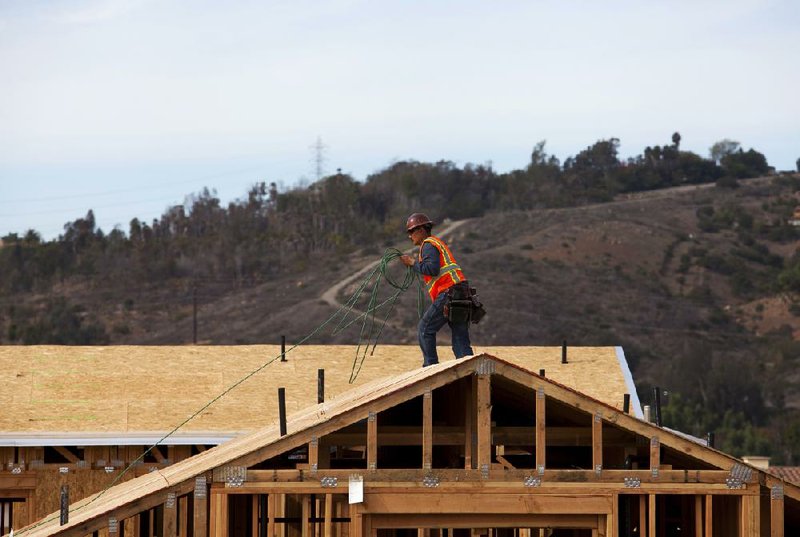WASHINGTON — Home prices rose in most major U.S. cities in October compared with a year ago, pushed up by rising sales and a decline in the supply of available homes. Higher prices show that the housing market is improving even as it moves into the more dormant fall and winter sales period.
The Standard & Poor’s/ Case-Shiller national home price index released Wednesday increased 4.3 percent in October compared with a year ago. That’s the largest year-over-year increase in 2 1/2 years, when a homebuyer tax credit temporarily boosted sales.
Prices rose in October from a year ago in 18 of 20 cities. Phoenix led all cities with a 21.7 percent gain, followed by Detroit, where prices increased 10 percent. Prices declined in Chicago and New York.
However, home prices fell in 12 of 20 cities in October compared with September. Monthly prices are not seasonally adjusted, so the decreases reflect the end of the peak buying season.
Still, the broader trend is encouraging. October marked the fifth-straight month of year-over-year gains, after nearly two years of declines. Prices rose in mid-2010 in the final months before the tax credit expired. They had fallen sharply in2008 and 2009.
“It is clear that the housing recovery is gaining strength,” David Blitzer, chairman of the index committee at S&P Dow Jones Indexes, said in a statement. “Higher yearover-year price gains plus strong performances in the southwest and California, regions that suffered during the housing bust, confirm that housing is now contributing to the economy.”
The improvement in housing is adding to economic growth, and most analysts expect that to continue in 2013.
But automatic tax increases and spending cuts that are set to take effect next week could drag down growth. The White House and Congress have so far failed to reach agreement on a way to avoid the “fiscal cliff.” President Barack Obama and congressional lawmakers will return to Washington on Thursday to resume talks.
“We expect home price appreciation to continue for the foreseeable future because inventories are lean amid rising sales,” said Joseph LaVorgna, chief U.S. economist at Deutsche Bank. “This assumes that a resolution to the ‘fiscal cliff’ is found. ... Otherwise, the recent positive trend in housing would most certainly be in jeopardy along with the rest of the current economic expansion.”
Prices nationwide have recovered to about the same level as in the fall of 2003, according to the Case-Shiller index. They remain about 30 percent below the peak reached in the summer of 2006.
The S&P/Case-Shiller index covers roughly half of U.S. homes. It measures prices compared with those in January 2000 and creates a threemonth moving average. The October figures are the latest available.
Solid gains in home prices have helped drive a modest recovery in the housing market. Rising prices encourage more potential buyers to come off the sidelines and purchase homes. And more people may put their homes on the market as they gain confidence that they can sell at a good price.
Higher home prices can also make homeowners feel wealthier and more likely to spend more. Consumerspending accounts for about 70 percent of the U.S. economy.
Steady job gains and record-low mortgage rates have also helped propel the housing recovery. And the low supply of houses for sale is encouraging builders to start work on more homes. That should lead to more construction jobs.
The pace of home construction slipped in November but was still nearly 22 percent higher than a year earlier. Builders are on track this year to start work on the most homes in four years.
Builder confidence rose in December for a seventhstraight month to the highest level in more than 6 1/2 years,according to a survey released last week by the National Association of Home Builders/ Wells Fargo.
“Record-low interest rates, attractive home prices, pentup demand, a lower supply of existing homes for sale, improvement in the economy and employment, and greater optimism are all helping drive the housing recovery,” Ara Hovnanian, chief executive officer of homebuilder Hovnanian Enterprises Inc., said on a Dec. 13 earnings call. “This is occurring in spite of the restrictive mortgage lending environment and the number of underwater existing-home buyers.”
Americans bought previously owned homes in November at the fastest pace in three years, figures from theNational Association of Realtors showed Dec. 20 in Washington.
Information for this article was contributed by Michelle Jamrisko and Shobhana Chandra of Bloomberg News.
Business, Pages 21 on 12/27/2012
